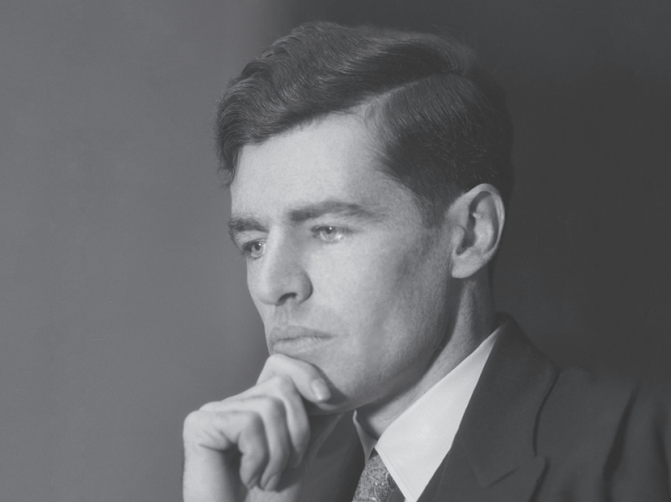Biographies: Cramped by Internment in England, Saved by Art
A welcome and overdue biography of an artist coping with the vicissitudes of war.

‘War and Peace in the Worlds of Rudolf H. Sauter’
By Jeffrey S. Reznick
Anthem Press, 2022, 226 pages
This aptly titled biography of a painter, poet, book illustrator, and printmaker is long overdue. Rudolf Helmut Sauter (1895-1977), the nephew of novelist John Galsworthy, was born in Germany and grew up in England. As a child, he sat on Joseph Conrad’s lap and studied at Harrow; at 19, he lost his place in English society, interned as an “enemy alien.”
Son of well-regarded German artist Georg Sauter, who had married Galsworthy’s oldest sister and settled in England, Rudolf was not a naturalized British subject when World War I began. Georg was deported to Germany in the wake of hostility against his native land, never to return to England. He supported Rudolf’s decision to remain there after the war.
Rudolf could not bring himself to write openly about his internment until near the end of his life. Instead he preferred to write poetry about “captivity,” publishing in 1922 the much anthologized “Barbed Wire,” alluding to a syndrome of neurasthenia and hysteria that overcame many internees suddenly deprived of their freedom, rejected by a society that in many cases they had helped to build.
Not even the influential Galsworthy had been able to obtain his nephew’s release until several months after the end of the war. Conditions in internment were nothing like the inhumanity of concentration camps, Sauter was quick to acknowledge. Nonetheless, it took him years to recover his equanimity.
Art saved Sauter. His creation of art studios, beginning in his internment, became environments of imagination, an escape from his evocation in “Barbed Wire” of “creatures corralled in this narrow track” confined to “forty paces” forward and “forty back.” The barbed wire appeared like a “monstrous serpent round our lives” coiling to “lock man out from Heaven’s wonder”.
What tormented Sauter was his feeling for his exiled father, and the German art he exemplified. Sauter overcame his suffering by becoming a naturalized citizen and an Army Welfare officer in World War II. He visited soldiers’ wives and children, trying to heal the wounds of war that he knew so well.
This copiously illustrated biography shows the range of Sauter’s art: delicate, impressionistic sketches of human figures; exquisitely detailed drawings and pen and ink wash depictions of cramped internment quarters with listless internees, others diverting themselves with games and crafts at sites in London and Surrey; illustrations for Galsworthy’s and John Masefield’s books; pastels of New York City; gallery diagrams; oil on board triptychs; and watercolors of war.
Sauter also continued to write poetry and a biography of Galsworthy, and in his 80th year began a series of paintings of the Grand Canyon, a subject he had first attempted on a visit in 1926, at “clear dawn … through the trees, shimmering in early light, undefinable. … And for a moment I had wondered … whether this might not be a pre-view of Heaven itself.”
Imagine what the Grand Canyon meant to a man who had been locked out from “Heaven’s wonder.”
Dr. Reznick, a meticulous researcher, turns up new primary sources and corrects inaccuracies in previous notices of Sauter. The biographer is also cognizant of his own contribution to art history, cultural biography, and the history of modern war, rightfully comparing his work to, for example, Peter J. Conn’s “Pearl S. Buck: A Cultural Biography” and Robert Guttman’s “Mozart: a Cultural Biography.”
Rudolf Helmut Sauter remains, nonetheless, a mystery. We learn little about his happy marriage or what, in his darkest moments, he thought of the country that had turned on him and his father. Sauter made his peace with England, as he makes clear in autobiographical essays Dr. Reznick appends to his biography, providing us with as much as Sauter wanted to say for himself.
Mr. Rollyson is the author of “Picasso: A Biography for Beginners” and profiles of artists, included in “Essays in Biography.”

